I’ve been into Ford Mustangs since High School. My first car was a 1966 Mustang V8 Coupe. My Dad was a Ford guy in those years and got me interested in Fords. When I needed a car my senior year in school, I found that ’66 Coupe.
1968 Shelby Cobra GT 350 (Mustang)
Without going very deep into the story of the Shelby Mustangs, suffice it to say that Lee Iocca asked Carroll Shelby to turn the 65 Mustang into a winning race car. Shelby’s team was already famous for stuffing a small block Ford engine into an English sports car and calling it a Cobra. Even though the Cobra was winning races and favor with the public, it wasn’t a pure Ford car. The Mustang was a hot selling car but it wasn’t much of a “race car.” That was until Shelby’s team got hold of it.
By 1967 the public’s taste wasn’t so much into an all out street race car. People wanted a sporty boulevard cruiser. The 1967-68 Ford Mustang was larger to allow a bigger engine to fit into it to fight the horsepower wars of the late 60’s. The 1967-68 Shelby Mustangs had more cosmetic changes rather than mechanical although the Shelby Mustangs did have some bolt on modifications.
I ran into John Chun some years ago at a car show in Chanhassan. Turned out John had been hired by Shelby American to polish off the 1967 cars and design the 1968 & 1969 Shelby Mustangs. Very interesting talking to John about his years at Shelby American. (Read more about John Chun at my 68 Shelby Cobra web page.)
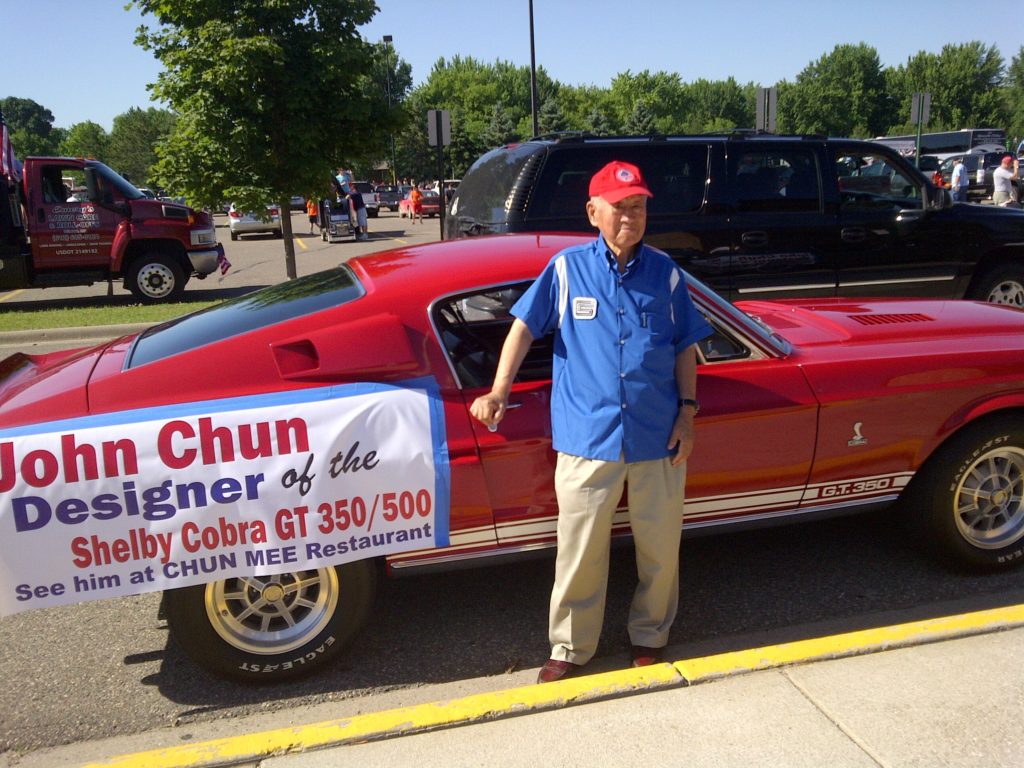
Purchased the car in January 1982
I found my Shelby in 1982, parked at a trailer park in Defiance, Ohio, the area I grew up in. It was for sale and in pretty rough shape. I worked a deal out to purchase the car. When I got it home my wife was not happy that I had spent our money on this “piece of junk.” But I knew how rare the car was and that it could be saved. I spent the years following learning about the Shelby Cars but more importantly, what my car needed to make it back to what it was when it left Shelby American. I have done a lot of the work myself, hiring more skilled things like body work, painting and some of the mechanical work. The car is basically stock in all the key areas.
My car came from Ford in New Jersey as a GT Mustang with:
- Toploader 4 Speed transmission
- Ford 302 (5.0) rated at 250 Horsepower
- Ford 3.89 9″ rear end.
- Export brace to strength the front end.
- Power steering with fluid radiator
- Kelsey Hayes Single Piston front disc brakes with large rear drum brakes
- Dual exhaust
Shelby American added things like:
- The upper and lower side scoops came with it.
- Roll bar welded to the floor with aircraft shoulder harness. (The car came with lap seat belts from Ford.)
- Fiber glass hood with vents cut into it and extended front end using the stock front bumper
- Fiberglass rear end with a tail spoiler and a fiberglass rear cap to support the chrome, 1965 T-Bird sequential taillights using the stock rear bumper
- Custom wood grain center console.
- Cobra Aluminum Hi-Rise intake (from Offenhauser)
- Holley 600 CFM 4 BBL carb
- Cobra Aluminum valve covers and oval Cobra air cleaner
The repairs I have made to this car:
- All new hoses and lines
- New front fenders and rear quarter panels
- New chrome lettering and emblems
- New floors
- New paint in 1983 – the original Candy Apple Red color
- New interior carpeting, seat covers and much of the interior. Few pieces have not been replaced.
- Replaced the stock steel rims and Shelby hub caps with NOS Shelby aluminum ten spoke 15″ rims
- Rebuilt the Ford Toploader 4-speed transmission with all new parts
The unique thing about Mustangs is you could order almost anything you wanted on the car. This made the Mustang the first car that a buyer could customize from the factory. I took that idea and went a bit farther.
These are the modifications I have made to my car:
- Pertronix electronic pointless ignition with a matching hotter coil
- 3 Core big block radiator for better cooling
- Replaced the entire front end and rear suspension with upgrades where available
- Lowered the car an inch on both ends with shorter performance springs for the front and mid eye 4.5 leaf springs in the back. This stiffened up the suspension on both ends. Dropping it an inch lowers the center of gravity improving the handling.
- Performance shocks on both ends
- Replaced the old Goodyear tires with Goodrich TA radials; Front Tires 215/65R15; Rear Tires 245/60R15, same height tires but the rear ones are about an inch wider.
- Added a Monte Carlo bar in the engine area to stiffen the front end
- Aluminumized dual exhaust with a an X pipe connecting the two sides to equalize the pressure and low restriction mufflers (My wife says it’s “loud and obnoxious.” Yes, it probably is. Beauty is in the eye of the beholder.)
- Pair of Tri-Y headers for better flow and less back pressure from the exhaust.
- Replaced the single piston KH front discs with Wilwood 4 piston discs
- Upgraded the rear brake shoes to Porterfield racing grade brake shoes
- The rear louvers were not available in 1968. Nor was the lower, front spoiler. Both were options or standard on some Mustangs in 1969-70. (The carpet in the back of the car was faded to almost a grey color from the sun.)
- Rebuilt the engine the summer of 2019 (see notes below.)
My car handles now much better than ever. Probably better than it did when it was new. The Wilwood discs made a huge difference in the stopping. Funny what you get used to. All those changes made the engine rebuild the next logical step. A lot of guys do the engine first but the car is not ready for the increased horsepower. Not the case here.
Rebuilding the engine Summer of 2019
I got a surprise on first start up in the spring of 2019, a very loud knocking sound. Took it to a shop to have it fixed. Turned out I had bad head gaskets on both sides. The good news is I didn’t make it worse so the engine block was fine. The engine builder asked me what I wanted to do with the car. I told him to bump up the horsepower. So off he and I went figuring out what to change.
I spent a huge number of hours researching Ford 302 engines so I could tell the builder what I thought we should do. I learned what Ford did to that 302/5.0 engine over the years. And that there are lots of parts available but all the parts do not work together with parts from different years. Although basically they will fit this block. Ford went to a roller cam valve train in 1985 H.O. 5.0 Mustang, the same year fuel injection was standard. Roller cams are a more efficient valve train than the older flat tappet setup in my 1968 Mustang. We decided not to spend that money on this upgrade and stay with the original design but upgrade it. The valve train is all newer technology that includes a roller tip on the tappet to reduce wear.
Interesting to think that an internal combustion engine is basically an air pump. Air comes in, goes through the end then comes out as exhaust. Making that process as efficient as possible improves the engine power.
Cylinder Heads
One weakness in the search for horse power in early Ford small blocks are the heads. The stock heads were designed to help the engine make a certain amount of horsepower and limit it’s ability to increase it. For a couple of hundred dollars I could step up to a set of Aluminum heads. The advantage to doing that is the intake and exhaust ports were larger than the stock heads and breathe much more efficiently.
Clutch and Pressure Plate
The existing clutch and pressure plate were not real bad. But since all the parts were laying on floor it would be a good time to upgrade those parts. Too many options frankly. I decided to go with McLeod Racing Pro Clutch. I was adding horsepower so a stock clutch level clutch might not work as well. The one I selected is one step above stock. Love this clutch. Not too stiff but feels secure working with this engine.
What we did to the engine
- Retained the original 1968 engine block
- Blue printed and balanced the engine
- Turned the original crankshaft and replaced the bearings
- New forged aluminum pistons with dishes cut for valves to allow for a more aggressive cam lift.
- New Comp Flat tappet cam with .509 intake lift and .512 exhaust lift. Duration 268/280 degrees. The builder used lifters with a roller tips on them for more efficiency. And matching springs. RPM range is 1600-5800
- The rocker arm studs are screwed into the heads instead of being pressed in. Included in high performance engines like the Ford HiPo 289 and the Boss 302. This keeps the parts in place when the engine is run at higher RPMs.
- Edelbrock # 5024 Aluminum Heads for larger valves and better breathing. Head Casting Number 6025P
- Combustion Chamber Volume 60.0 cc
- Intake Runner Volume 170.0 cc
- Intake and Exhaust ports 2.02″
- Retained the aluminum Cobra intake, the builder cleaned it up to make it flow better
- Retained the Tri-Y headers
- Replaced the old Holley carb with a new Holley Brawler 600 CFM with an electric choke and mechanical secondaries
- McLeod diaphragm clutch and pressure plate. #MCL 75313. First used in the 1974 Mustang, this Borg & Beck diaphragm (many fingers) setup is newer and better technology than the three finger Long Style used prior including 1968.
- Input Spline Quantity:10
- Input Shaft Diameter:1.063 in.
- Disc Diameter (in):10.000 in.
- Disc Diameter (mm):254mm
- Disc Material:Organic/Ceramic
So what did I end up?
From the factory this engine was rated at 250 HP which was probably optimistic considering how HP ratings were given in 1968. Ford rated the non Shelby 1968 4 Bbl at 230 HP. The famous Ford High Performance 289 was rated at 271 HP and last offered in 1967. The Shelby version was rated at 306 HP. The racing 289 engines run by Shelby American were rated at 350 HP. The 428 big block engines were rated at 335 HP, although that was probably conservative. The 1970 Boss 302 was rated at 290, conservatively. The Windsor 4 Bbl 351 was rated at 290 in 1969 and 300 in 1970. My new 2017 Mustang GT Coyote 5.0 is rated at 435 HP. These are all flywheel horsepower ratings and not at the rear wheels.
I also ended up with a real awesome McLead Clutch and Pressure Plate.
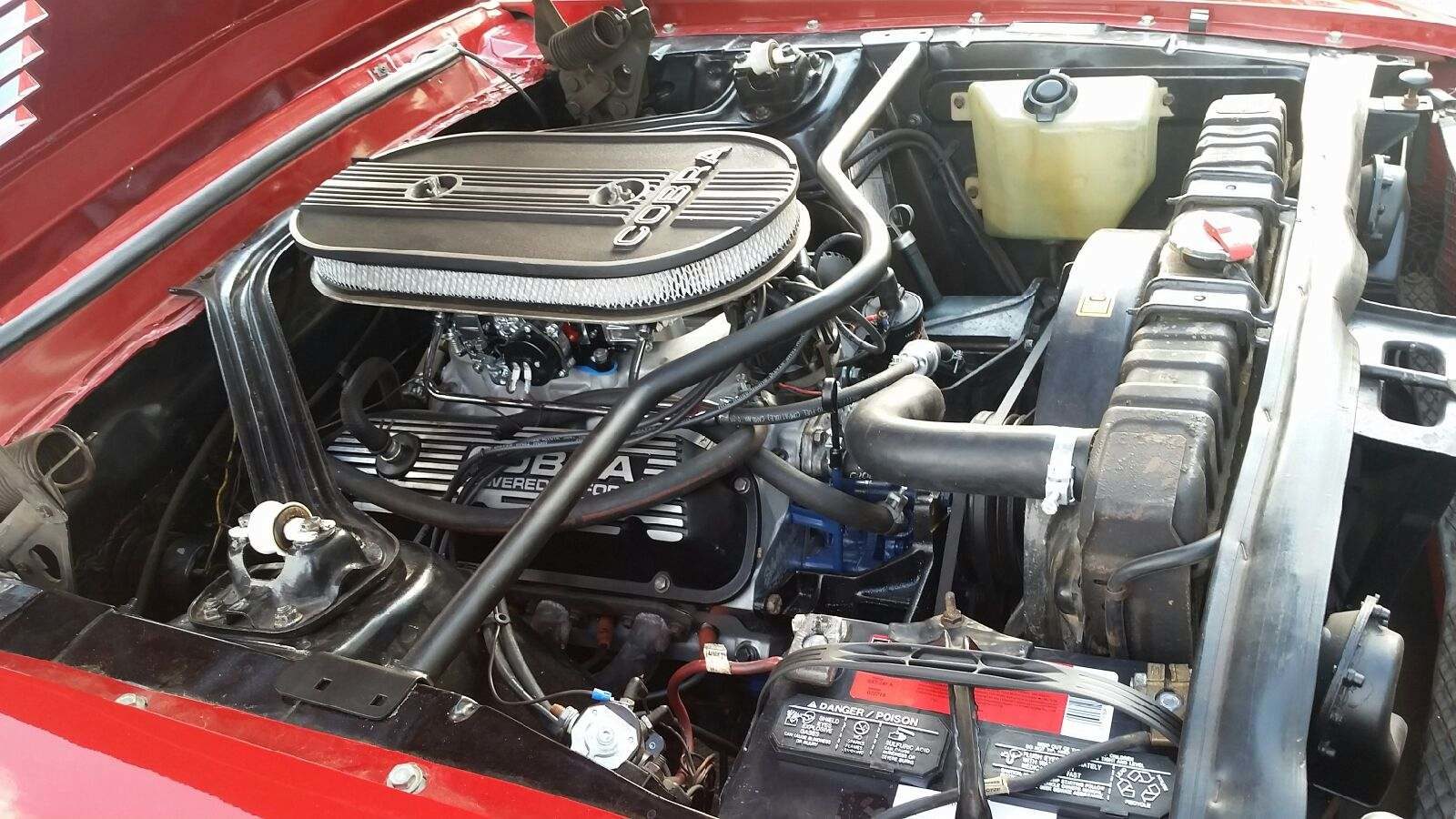
I had the car dyno’d a few years ago at Samaritan Tires’ car show. The horsepower came in at about 185 at the rear wheels. Add in about 20% for loss from the engine makes the Gross HP about 230. Less than expected but I had a head gasket issue even then and this was with gas that had set all winter in the car.
Before I got the engine back, the builder had it dyno’d alone before installation in the car. My old Holley didn’t work well so they used an Edelbrock carb and got 320 Horse power. So we added almost 100 horsepower. So my new engine comes in pretty good in relations of what the other cars from the period offered. With the parts we used it is safe to say this is a racing engine for street driving with lots of potential.
There is a big difference in the running and fun factor for sure. It’s a different car. That 3.89 rear end works extremely well with this new engine. My intentions for next spring are to take it to a shop and tweak it for maximum power. Basically it has a racing engine in it now. But the new Holley carb needs tweaking for sure for this setup.
What is left to do to this car?
- Rear disc brakes would be a nice luxury and on the list
- Touch up the paint and some minor repairs to the paint and body
- Love to have a 5 speed transmission. A 4 speed with this rear end keeps the RPMs up on the highway. Be nice to have an overdrive 5th gear.
- Get the radio fixed or replaced. There is an aftermarket AM FM with an 8 track in the dash right now. Never hooked it up. The car is almost too loud to enjoy a radio.
Go to my 1968 Shelby Cobra web page to learn more about the 1968 Shelby Mustangs and more specifics about my Shelby Cobra. Click here.

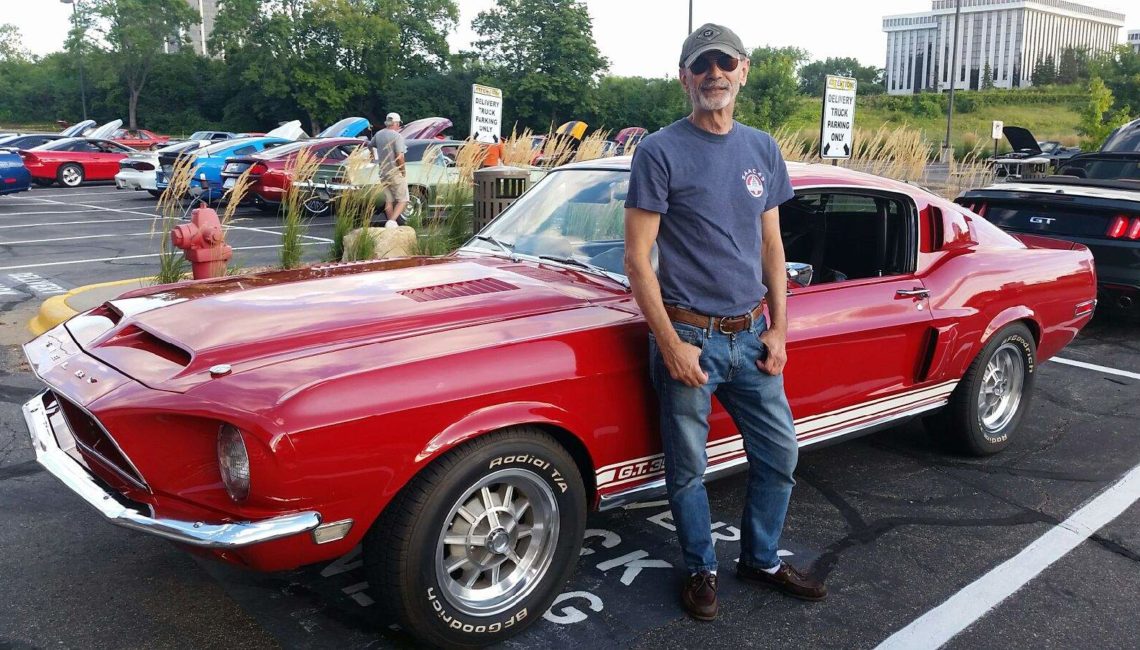
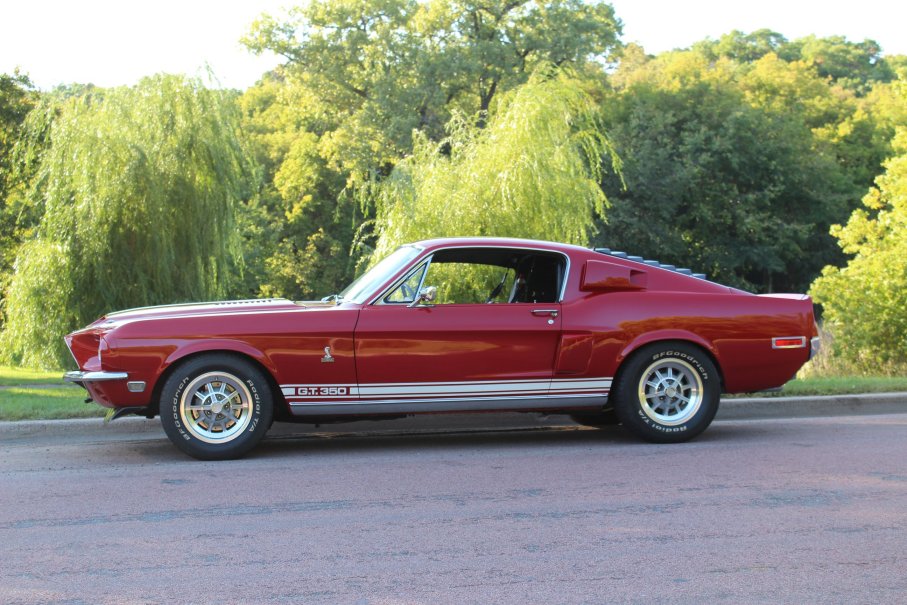
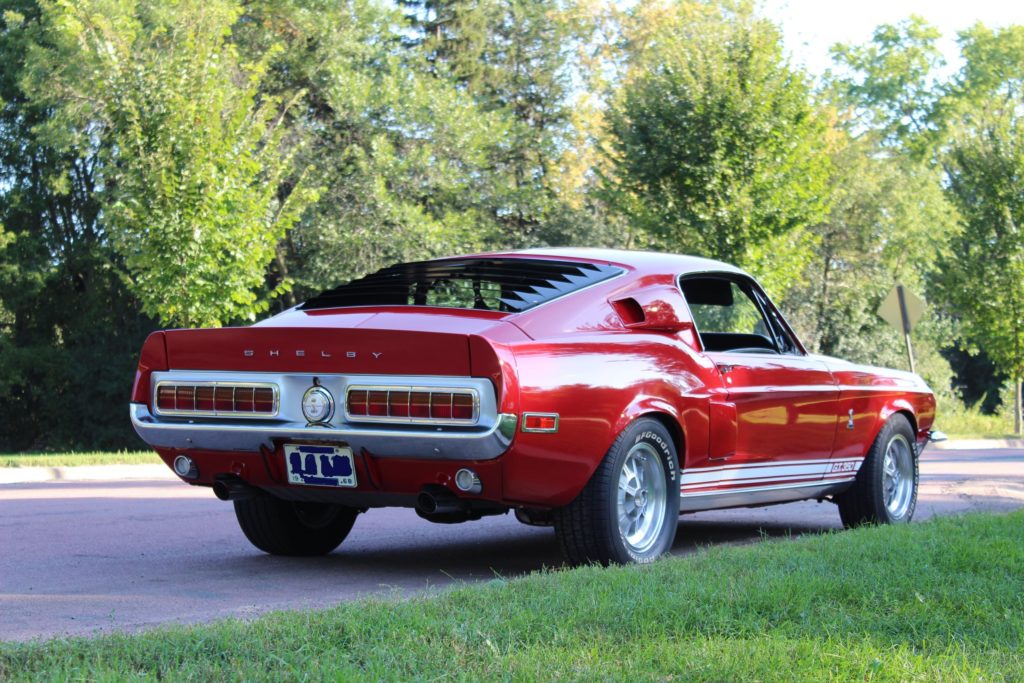




Recent Comments